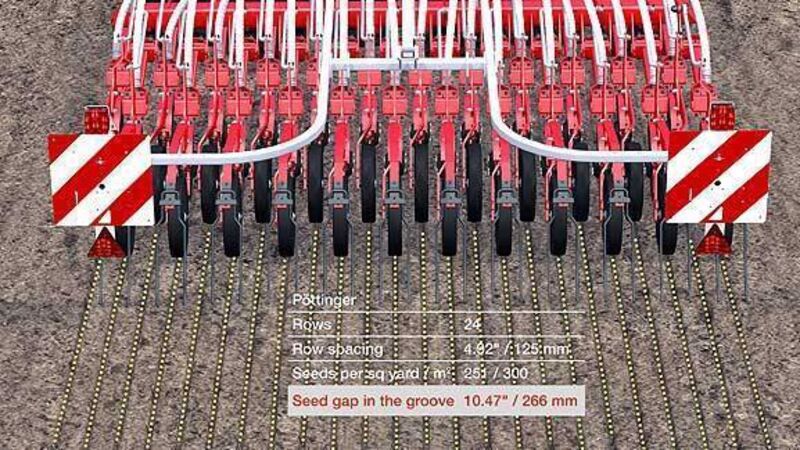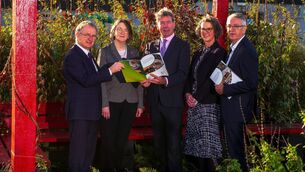Drill manufacturer kicks off debate with claim their seed row spacing is best

Which is best? What is the ideal drill spacing?
That is the question posed for debate by Austrian farm manufacturer Alois Pˆttinger Maschinenfabrik, which makes drills with a 12.5cm spacing.
According to Pˆttinger, to achieve a planting density of 300 seeds per square metre, a seed must fall into the planting groove at intervals of 2cm, if the row spacing is 16.6 cm.
On 15cm drills, it is 2.2cm, and on 12.5cm machines, it is 2.7cm. The wider the row spacing, the more accurately the seed has to be placed in the groove.
So why even consider larger row spacing, if narrower spacing is more efficient? The answer is easy, according to the Austrian company — different designs of coulter system and inter-coulter rail spacing (the space between each gang of coulters) often force the manufacturer into producing larger row spacings, especially on mulch drills.
Many technical innovations have been developed to improve the seed gap in the groove, aimed primarily at machines with a large row spacing (15cm or 16.7cm), and designed to place seeds closer together in the planting groove line, to achieve the desired quantity of seed sown per square metre with a wider row spacing.
Manufacturers of these new products claim they can increase yield by up to 8%, as a result of better plant distribution density.
With crop yield losses of up to 1,000kg at stake if the seed sown per square metre target is not achieved, Pottinger claims that machines with a smaller row spacing deliver better plant-distribution density to start with, and 20% more rows on a drill with a working width of 3m, compared to a drill with a row spacing of 15cm (25% better than a row spacing of 16 . 7 cm) — achieved without extra technical solutions to get seed density right in the planting groove.
Pˆttinger acknowledges there is a slightly higher purchase price for a seed drill with a row spacing of 12.5cm — and therefore more coulter elements and seed grooves — but clams that is more than compensated for by higher yield potential.
The company also claims 12.5cm row spacing gives a saving on seed of up to 10%; faster ground coverage resulting in fewer weeds; shade provided sooner, for improved micro-climate; and protection against erosion.









